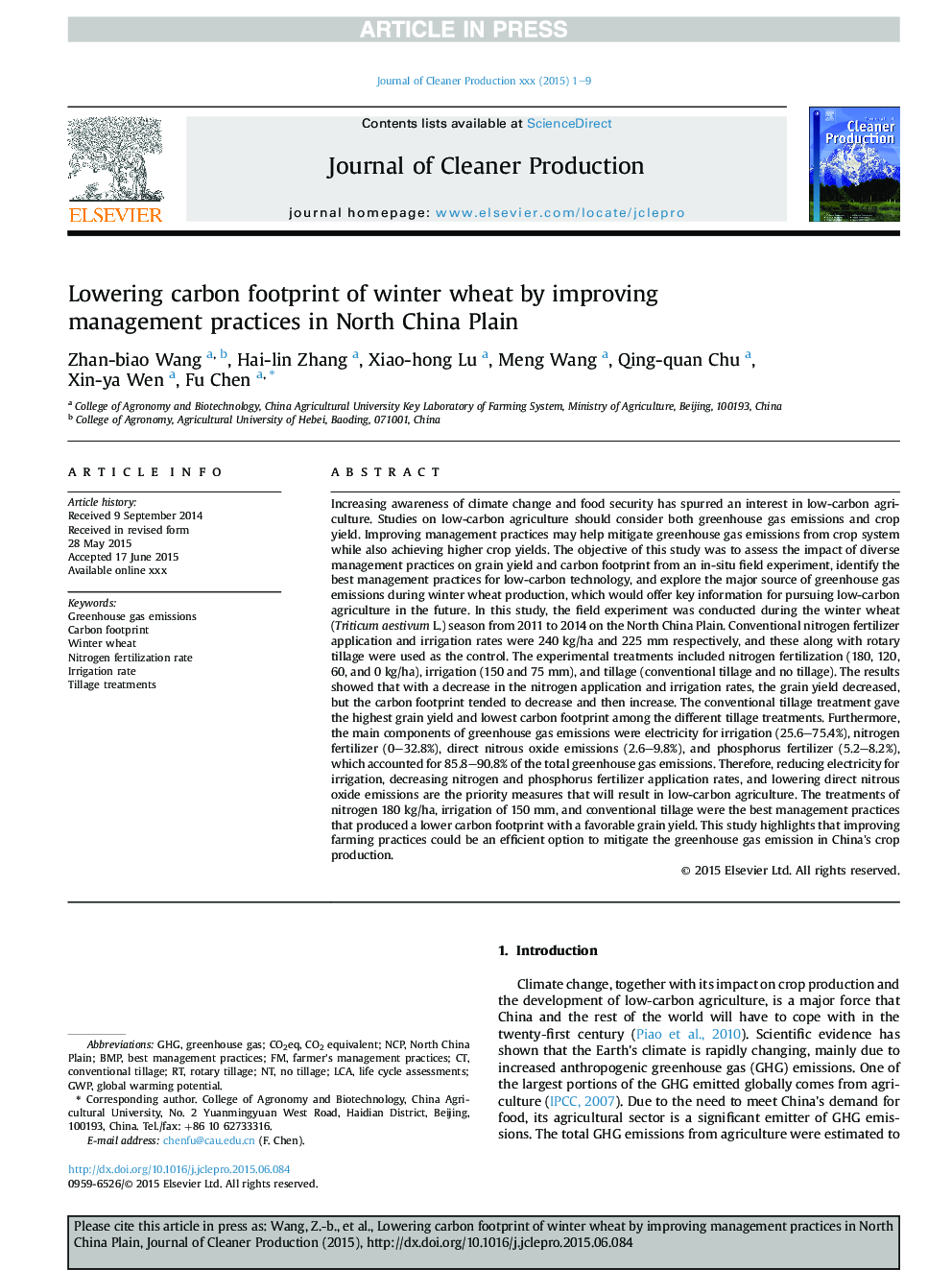| کد مقاله | کد نشریه | سال انتشار | مقاله انگلیسی | نسخه تمام متن |
|---|---|---|---|---|
| 10688023 | 1017970 | 2016 | 9 صفحه PDF | دانلود رایگان |
عنوان انگلیسی مقاله ISI
Lowering carbon footprint of winter wheat by improving management practices in North China Plain
ترجمه فارسی عنوان
کاهش اثرات کربن گندم زمستانه با بهبود شیوه های مدیریت در دشت شمال چین
دانلود مقاله + سفارش ترجمه
دانلود مقاله ISI انگلیسی
رایگان برای ایرانیان
کلمات کلیدی
GWPTillage treatmentsCO2eqCO2 equivalentIrrigation rateRotary tillageNCPGHGLCA - ارزیابی چرخه حیاتLife cycle assessments - ارزیابی چرخه زندگیGreenhouse gas emissions - انتشار گازهای گلخانه ایNo tillage - بدون خاکریزیBest management practices - بهترین شیوه های مدیریتNorth China Plain - دشت شمال چینCarbon footprint - ردپای کربنConventional tillage - شخم زدن معمولیBMP - مدیریت فرایند کسب و کارglobal warming potential - پتانسیل گرمایش جهانیGreenhouse gas - گاز گلخانه ایWinter wheat - گندم زمستانه
موضوعات مرتبط
مهندسی و علوم پایه
مهندسی انرژی
انرژی های تجدید پذیر، توسعه پایدار و محیط زیست
چکیده انگلیسی
Increasing awareness of climate change and food security has spurred an interest in low-carbon agriculture. Studies on low-carbon agriculture should consider both greenhouse gas emissions and crop yield. Improving management practices may help mitigate greenhouse gas emissions from crop system while also achieving higher crop yields. The objective of this study was to assess the impact of diverse management practices on grain yield and carbon footprint from an in-situ field experiment, identify the best management practices for low-carbon technology, and explore the major source of greenhouse gas emissions during winter wheat production, which would offer key information for pursuing low-carbon agriculture in the future. In this study, the field experiment was conducted during the winter wheat (Triticum aestivum L.) season from 2011 to 2014 on the North China Plain. Conventional nitrogen fertilizer application and irrigation rates were 240Â kg/ha and 225Â mm respectively, and these along with rotary tillage were used as the control. The experimental treatments included nitrogen fertilization (180, 120, 60, and 0Â kg/ha), irrigation (150 and 75Â mm), and tillage (conventional tillage and no tillage). The results showed that with a decrease in the nitrogen application and irrigation rates, the grain yield decreased, but the carbon footprint tended to decrease and then increase. The conventional tillage treatment gave the highest grain yield and lowest carbon footprint among the different tillage treatments. Furthermore, the main components of greenhouse gas emissions were electricity for irrigation (25.6-75.4%), nitrogen fertilizer (0-32.8%), direct nitrous oxide emissions (2.6-9.8%), and phosphorus fertilizer (5.2-8.2%), which accounted for 85.8-90.8% of the total greenhouse gas emissions. Therefore, reducing electricity for irrigation, decreasing nitrogen and phosphorus fertilizer application rates, and lowering direct nitrous oxide emissions are the priority measures that will result in low-carbon agriculture. The treatments of nitrogen 180Â kg/ha, irrigation of 150Â mm, and conventional tillage were the best management practices that produced a lower carbon footprint with a favorable grain yield. This study highlights that improving farming practices could be an efficient option to mitigate the greenhouse gas emission in China's crop production.
ناشر
Database: Elsevier - ScienceDirect (ساینس دایرکت)
Journal: Journal of Cleaner Production - Volume 112, Part 1, 20 January 2016, Pages 149-157
Journal: Journal of Cleaner Production - Volume 112, Part 1, 20 January 2016, Pages 149-157
نویسندگان
Zhan-biao Wang, Hai-lin Zhang, Xiao-hong Lu, Meng Wang, Qing-quan Chu, Xin-ya Wen, Fu Chen,
